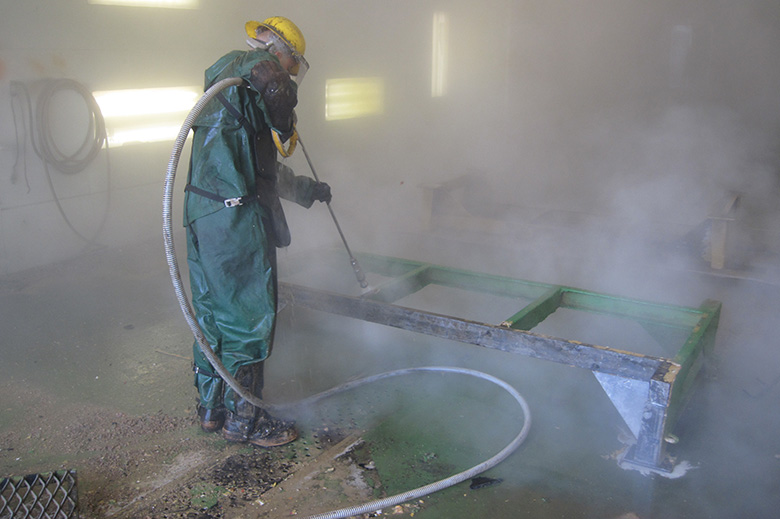
Image Source: Google
Hydroblasting, also known as water blasting or hydro-jetting, is a highly effective method used by contractors to clean and prepare surfaces for various applications. If you are looking for the best hydroblasting contractors for your needs then, you can explore various web sources.
By utilizing high-pressure water streams, hydroblasting can remove stubborn coatings, dirt, grime, and other contaminants from surfaces with precision and efficiency. In this article, we will explore how contractors unleash the power of hydroblasting to transform surfaces with unparalleled accuracy.
The Science Behind Hydroblasting
Hydroblasting is a process that involves the use of water jets at extremely high pressures to clean and prepare surfaces. The equipment used in hydroblasting typically consists of a pump that pressurizes water to levels ranging from 10,000 to 20,000 pounds per square inch (psi) or even higher. This high-pressure water is then directed through a specialized nozzle that focuses the water stream onto the surface to be cleaned.
Key components of hydroblasting equipment include:
- High-pressure pump
- Nozzles (including rotating nozzles for increased efficiency)
- Hoses
- Protective gear for operators
Applications of Hydroblasting
Contractors utilize hydroblasting in a wide range of industries and applications due to its versatility and effectiveness. Some common applications of hydroblasting include:
Surface Preparation
- Removing old paint, rust, and coatings in preparation for refinishing
- Cleaning concrete surfaces before repairs or coatings are applied
Industrial Cleaning
- Cleaning industrial equipment, tanks, and machinery
- De-scaling pipes and removing buildup in industrial settings
Environmental Cleanup
- Removing contaminants and pollutants from surfaces and structures
- Cleaning up hazardous materials spills
The Benefits of Hydroblasting
Contractors choose hydroblasting over traditional cleaning methods for several key reasons:
Efficiency
- Hydroblasting can remove contaminants quickly and effectively, reducing downtime for projects.
- The high-pressure water jets can reach surfaces that may be difficult to access using other methods.
Environmentally Friendly
- Hydroblasting uses water as the main cleaning agent, making it an environmentally friendly option compared to chemical cleaners.
- The process generates minimal waste and does not produce harmful fumes or emissions.
Precision and Versatility
- Contractors can adjust the pressure and flow rate of the water to suit different surface types and cleaning requirements.
- Hydroblasting is suitable for delicate surfaces as well as heavy-duty industrial cleaning tasks.
Challenges and Safety Considerations
While hydroblasting is a powerful cleaning method, it also comes with specific challenges and safety considerations that contractors must address:
Surface Damage
- Excessive pressure or improper nozzle selection can result in surface damage, especially on softer materials like wood or certain types of metal.
- Contractors must carefully assess the surface material and choose the appropriate water pressure and nozzles to avoid damage.
Operator Safety
- Operators must wear appropriate protective gear, including eye protection and hearing protection, to prevent injuries from the high-pressure water jets and noise generated during hydroblasting.
- Training and experience are essential to ensure safe operation of hydroblasting equipment.
Conclusion
Hydroblasting is a valuable tool in the arsenal of contractors looking to clean, prepare, and restore surfaces with precision and efficiency. By harnessing the power of high-pressure water jets, contractors can tackle a wide range of cleaning and preparation tasks across various industries.
